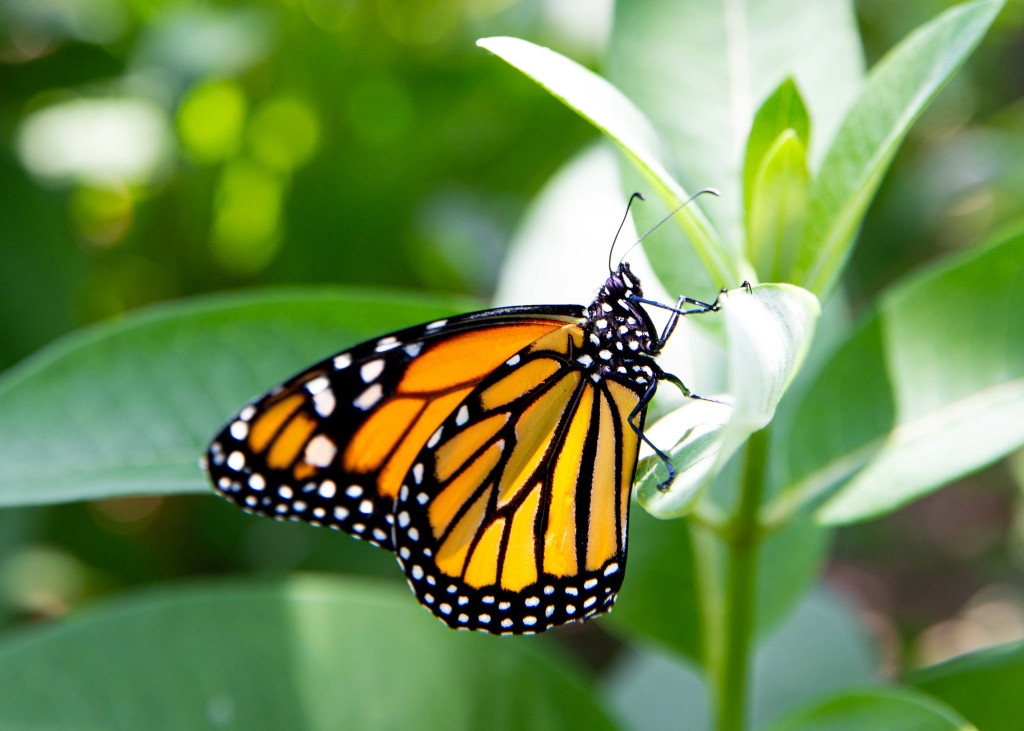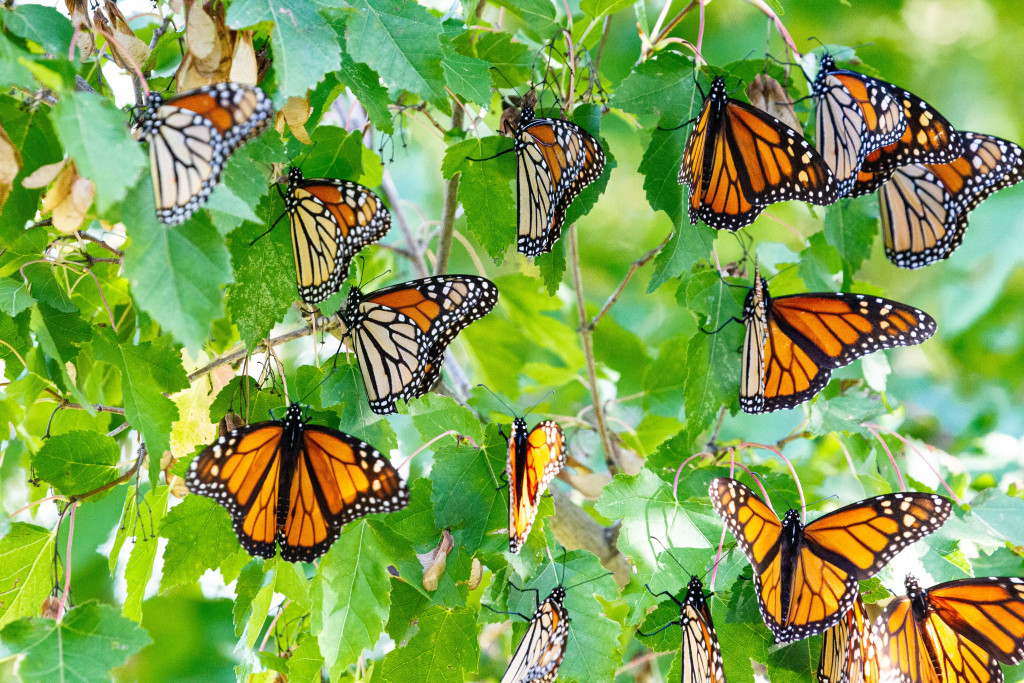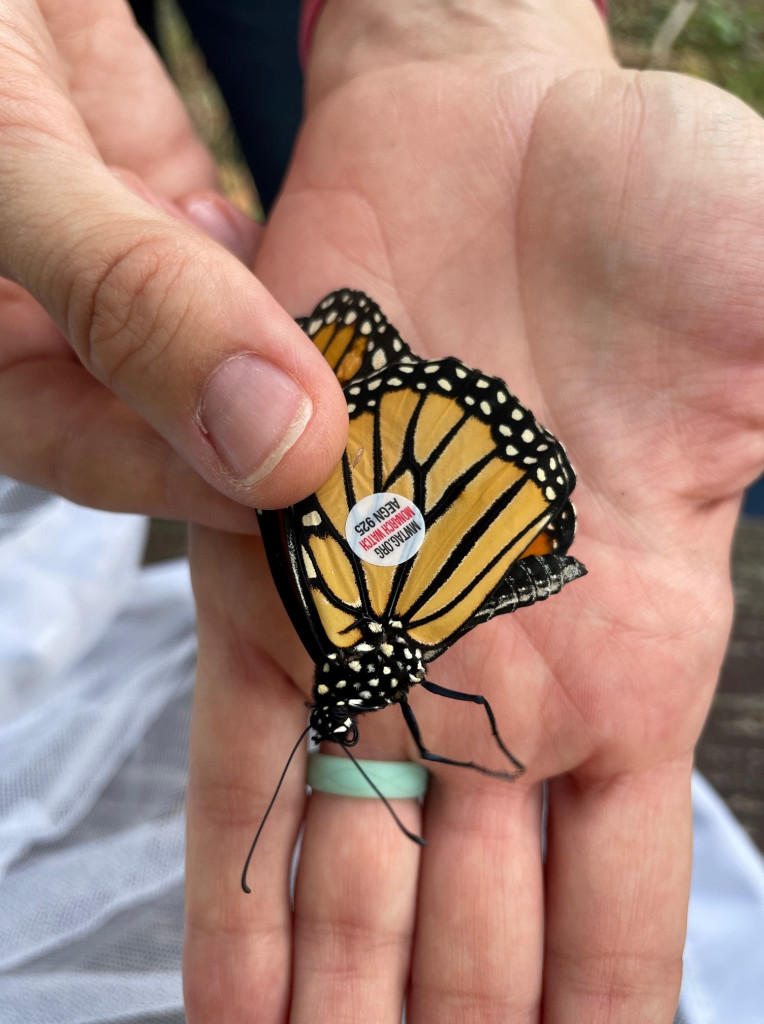A brief history of the monarch butterfly as a potential endangered species
Enlarge

Photo by Jeff Kurrus, Nebraskaland Magazine
By Cody Dreier, Pollinator Ecologist
Monarch butterflies are the “poster child” of pollinators, and rightfully so. They remind us of the importance of conserving pollinator habitats and creating new ones – even little plots in our own yards. Unfortunately, monarch populations have declined, and conserving them has been no easy task.
Reasons for Decline
The monarch’s decline is death by a thousand cuts. There is no one universal cause for the declines. Some monarchs are infected by Ophryocystis elektroscirrha, a protozoan parasite that affects the insects throughout their entire lifecycle and causes deformities and even death.
Herbicides and pesticides sprayed on fields that contain milkweed not only harm the targeted species, but also many non-target insects, including monarchs.
Additionally, the eastern population of monarchs, which include those in Nebraska, rely on only 12 wintering ground locations in Mexico that contain oyamel fir forests. Here, the butterflies are tightly packed, sometimes 15,000 or more on a single fir branch. Unfortunately, logging in the oyamel forests has reduced this critical monarch wintering habitat.

History of Species Listing
While Mexican locals have known about the monarch’s wintering grounds for thousands of years, it was not until 1975 when biologist Dr. Fred Urquhart observed the large concentrations of monarchs and shared this knowledge with the scientific community.
In the 1990s, the population of monarch butterflies was estimated to have around 1 billion individuals. By the winter of 2013–2014, the eastern migratory population dropped to an estimated 33 million butterflies. This decline caused the Center for Biological Diversity, and other concerned groups, to write a formal petition for the monarch butterfly to be listed under the Endangered Species Act.
On the last day of 2014, the U.S. Fish and Wildlife Service started the review of the monarch. This 12-month study finally concluded in December 2020, which deemed the monarch’s status as “warranted but precluded.” This essentially meant that although monarchs met the criteria to be listed, there were other, more threatened species the USFWS had to prioritize over monarchs. The proposed timeline for a concrete ruling is anticipated in 2024, when the monarch butterfly will be listed as “not warranted,” “threatened” or “endangered”.

Western Monarch
West of the Rockies, evidence showed that the western population of monarchs that overwinter near the California coast has dropped from over 1 million individuals in the 1990s to less than 2,000 individuals in 2020. Although the population bounced back to well over 200,000 individuals in 2021, these large dips remain worrisome, so much so that the International Union for Conservation of Nature placed the monarch on its Red List of Threatened Species.
While the monarch’s endangered status on the Red List made headlines, it should be noted that the IUCN has no regulatory power in the United States. That power rests with the U.S. Fish and Wildlife Service and their decision coming up in 2024.
How You Can Help Monarchs
You might be wondering how you can help monarch butterflies. The simplest way is to plant flowers. Native flowers are preferable, but anything is a start. Be sure to avoid pesticides, as the goal is to have the flowers eaten. Milkweed is great, but monarchs also need nectar to fuel their reproduction and migration.
If you would like to take a more active role in monarch conservation, the Nebraska Game and Parks Commission is looking for community scientists to assist with our monarch and regal fritillary surveys each summer.

The Monarch Watch Tagging Program relies on community scientists to carefully catch and tag monarch butterflies. This effort will help scientists better understand the dynamics of the butterfly’s fall migration. The tags are small and lightweight, about half the size of a sticker on your apples from the store, and they do not harm or interfere with the monarch’s flight. Each tag has a unique code, so if individuals are recaptured during their migration, or found on their wintering grounds, scientists will know where that monarch was tagged and when.
 Nebraskaland Magazine
Nebraskaland Magazine


